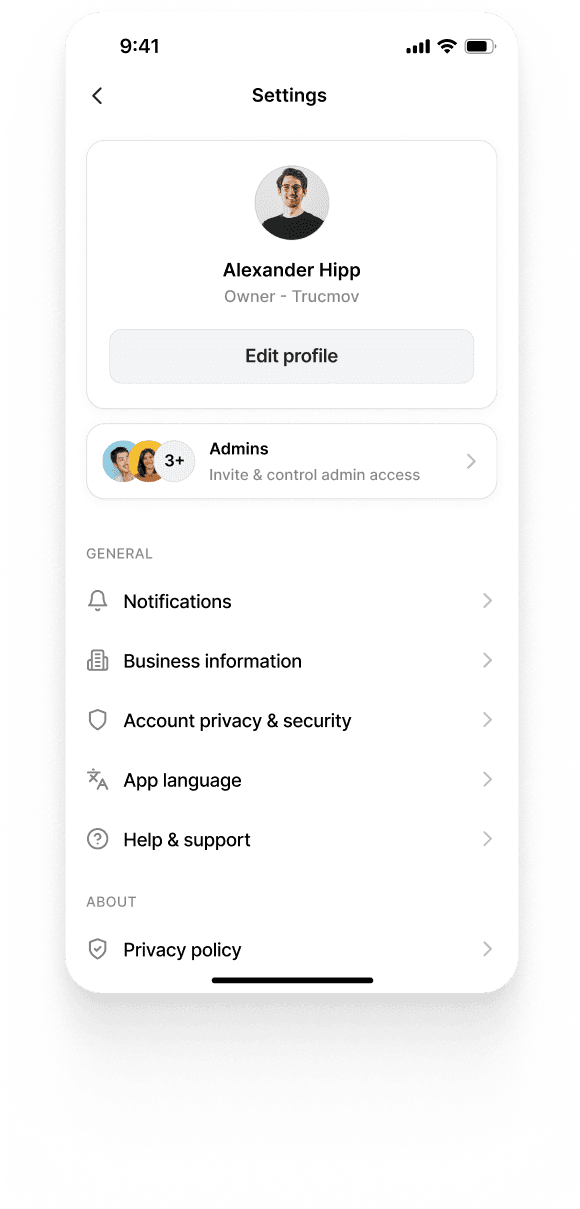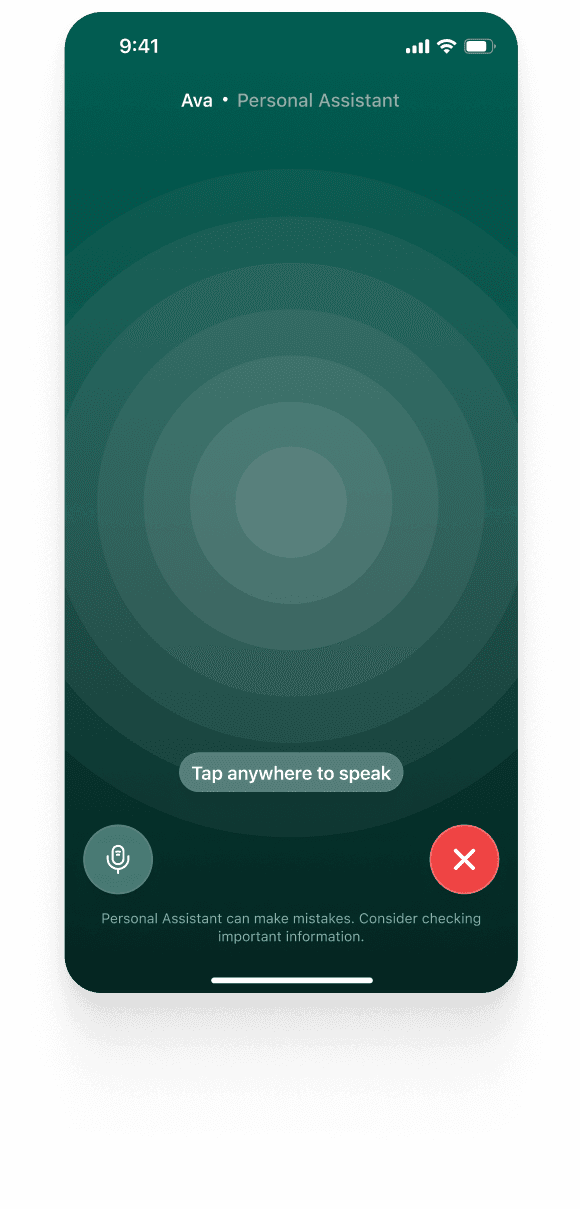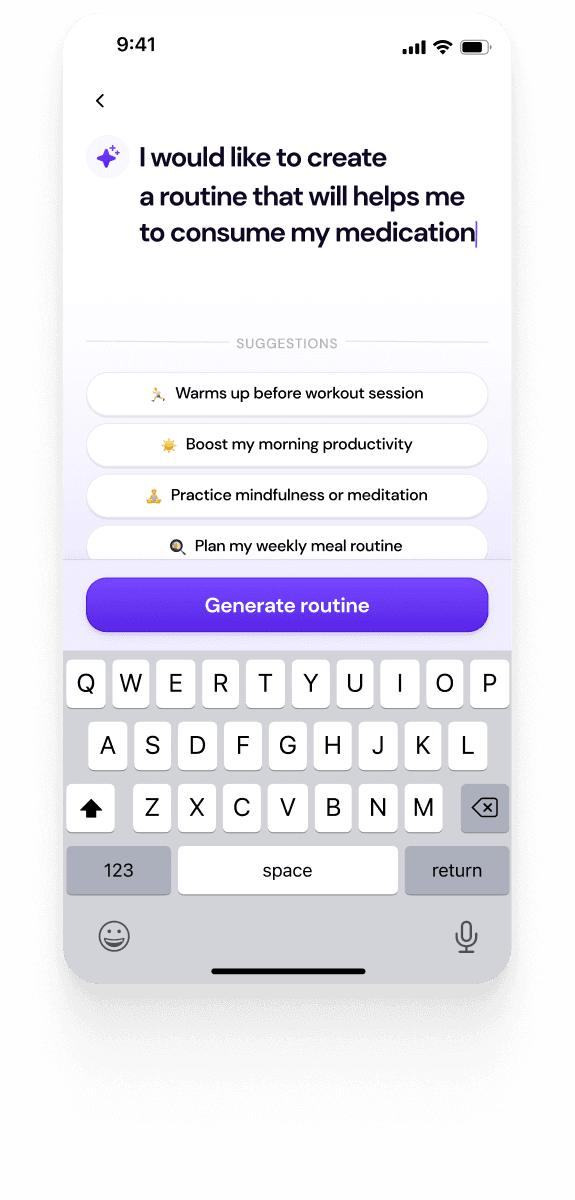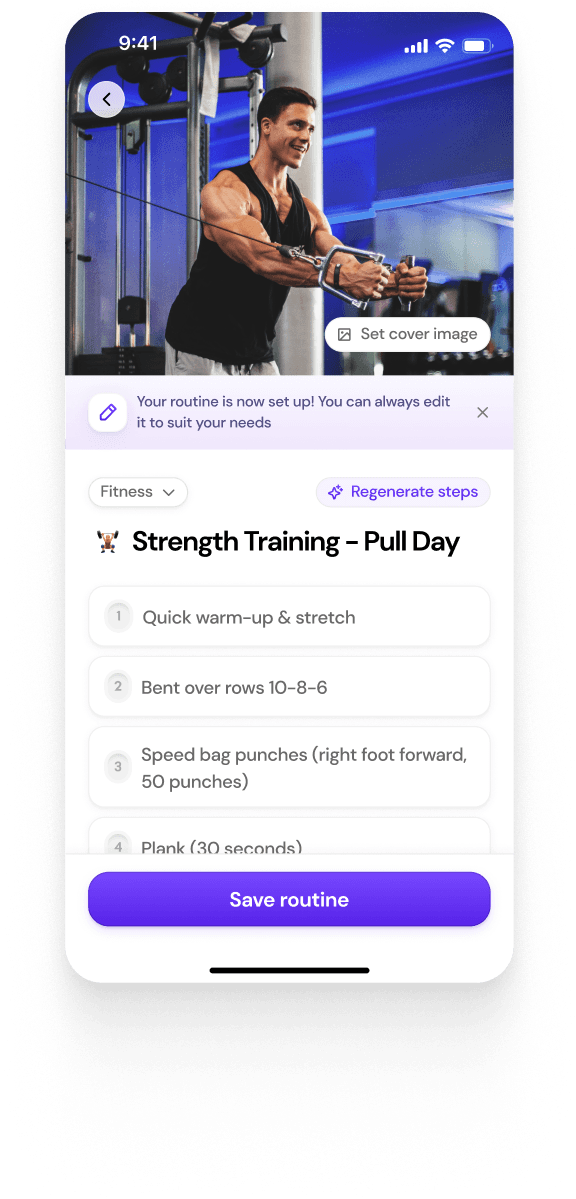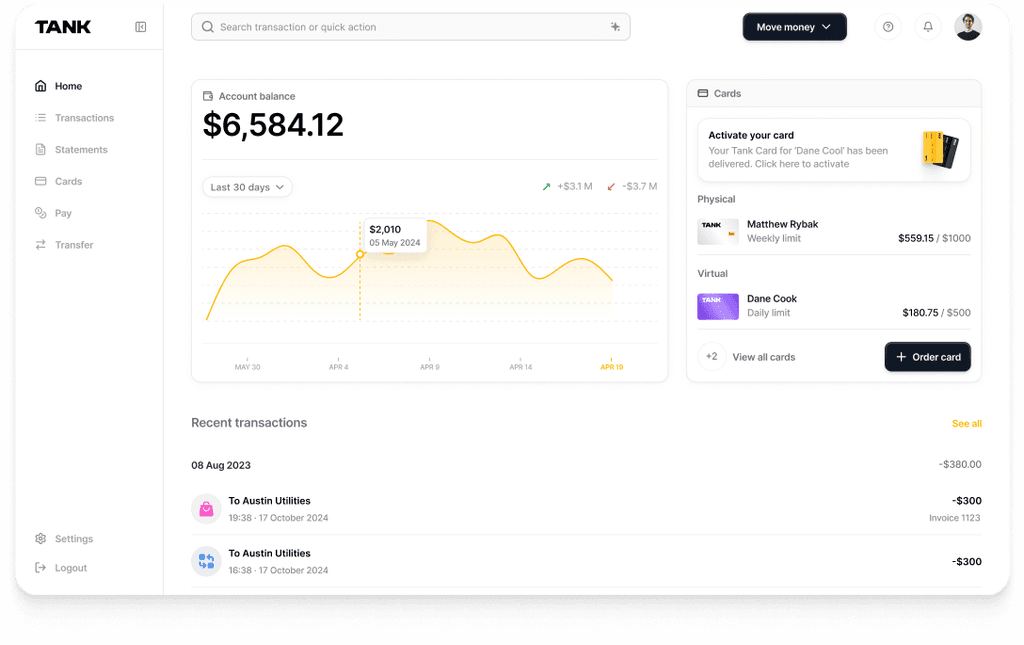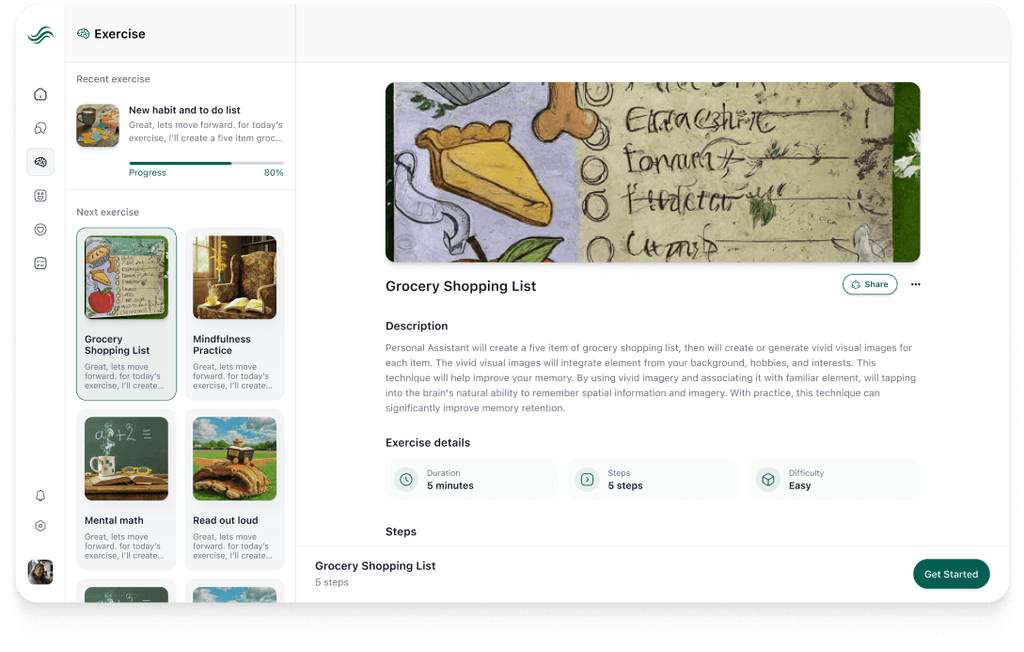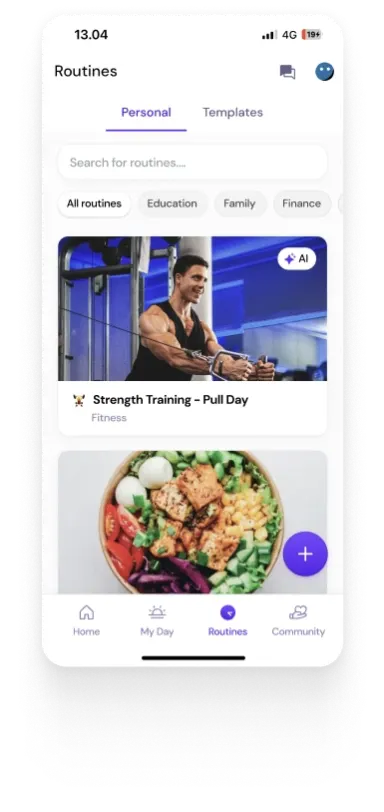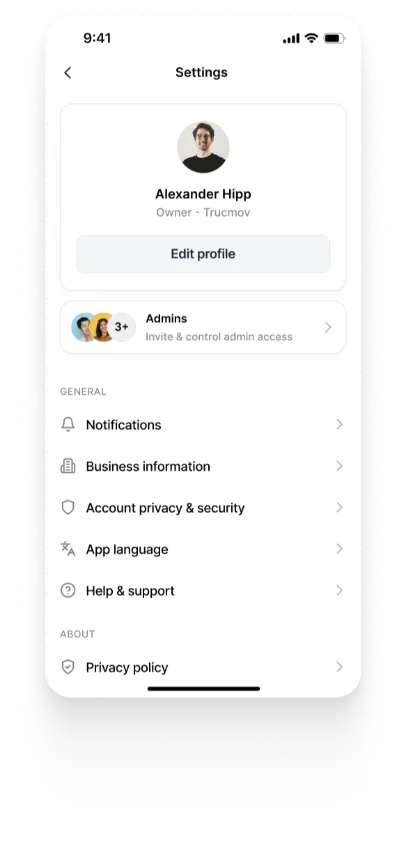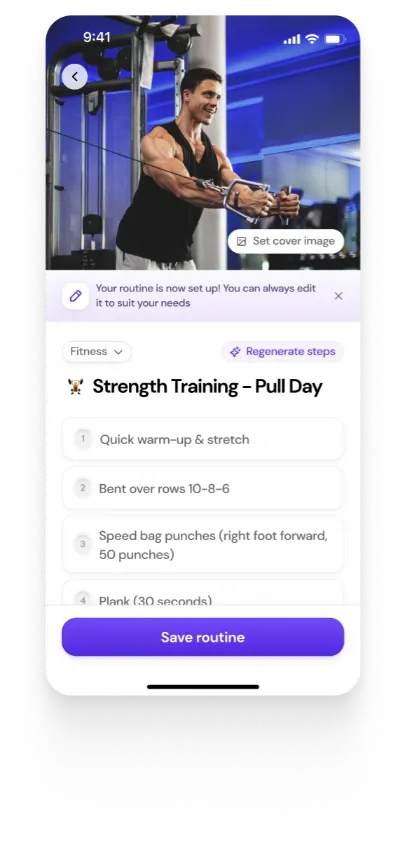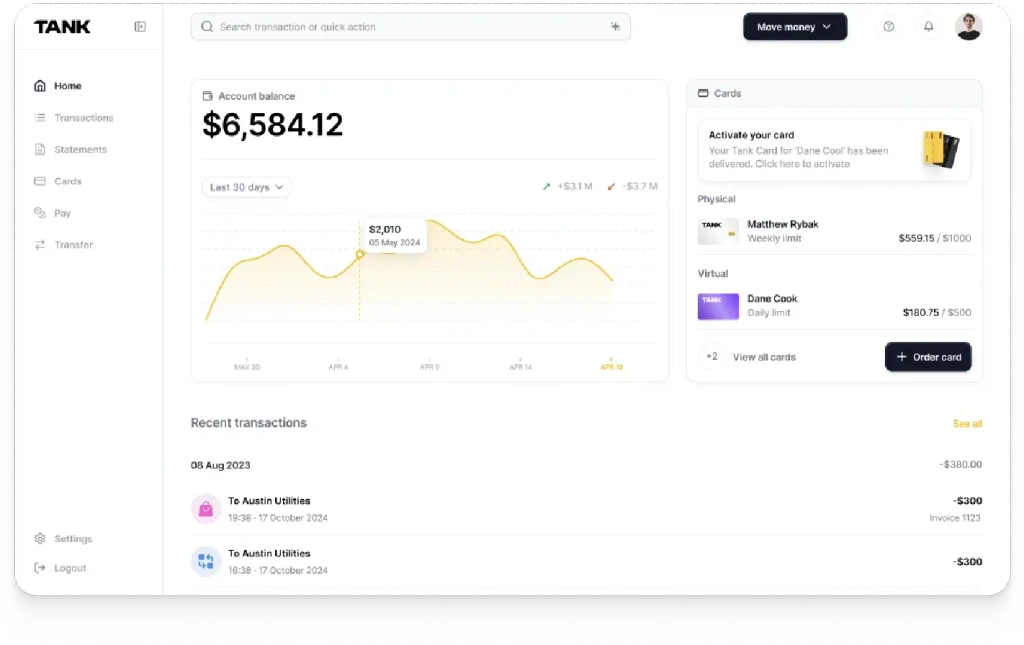AI-Native Computing: How Steve Fits into an Ecosystem with OpenAI and Jony Ive’s io
Summary
The article explains how Steve, an AI-native operating system, shifts AI from an add-on tool to the core of computing. It details Steve’s proactive, conversational interface and its synergy with OpenAI’s models and Jony Ive’s hardware. The piece highlights the productivity, scalability, and innovation potential for startups adopting this AI-native approach.
Key insights:
AI-First Integration: Steve embeds AI deeply into the OS, creating an adaptive, proactive environment for user interactions.
Shared Memory: It enables multiple AI agents to collaborate, eliminating redundant work and improving workflow coherence.
Conversational UI: Users can interact naturally with Steve, reducing the need for complex technical skills.
Self-Maintenance: Steve autonomously manages updates and optimizes performance, minimizing maintenance burdens.
Enhanced Decision-Making: The AI OS acts as a data-driven advisor, boosting strategic insights and operational decisions.
Complementing AI Ecosystem: Steve bridges OpenAI’s models and AI hardware like io, ensuring seamless, context-rich experiences.
Introduction
Artificial intelligence is reshaping not only applications but the very foundations of computing. In 2025, the AI ecosystem includes ambitious hardware projects like io, the AI device firm founded by renowned designer Jony Ive (now part of OpenAI), as well as strong model-driven platforms like OpenAI. However, Steve—the first AI operating system—emerges with these advancements, integrating AI at the center of the computing environment.
This convergence of AI models, AI-native operating systems, and AI-optimized devices signals a shift in how we build and use technology. The distinction between AI and system software is becoming increasingly hazy, as evidenced by OpenAI's CEO Sam Altman's hint at a future "subscription" AI service that functions similarly to an operating system for your life. Steve's position as a pioneering AI-native operating system provides a counterpoint in this context: rather than just offering an AI model or device, it reimagines the whole computer stack with intelligence integrated throughout. The next sections examine Steve's differences between hardware-focused endeavors and model-centric AI platforms, and why this is significant for developers and startups hoping to increase productivity and innovation in an AI-first world.
From Model-Driven AI to AI-Native Systems
Traditional AI adoption has been model-driven: companies use services like OpenAI’s GPT models as tools, calling them via APIs to add intelligence to specific apps or features. Despite its strength, this method views AI as an add-on; the underlying operating systems and gadgets (PCs, phones) are mostly based on manual processes and commands. For example, OpenAI's ChatGPT is a model that can be accessed via a chat interface or API, but it operates on top of devices and systems that were not built with AI-rich interaction in mind. Industry leaders are working toward more comprehensive integration in recognition of this gap.
In their latest partnership on io, Altman and Ive openly question the status quo by claiming that the gadgets in use today "are obsolete, and not optimized for AI." Software innovators are also developing AI-native operating systems, which would integrate AI into the computer environment as a whole rather than merely as a cloud service. At the vanguard of this movement is Steve. The paradigm changes from one that is model-centric (where intelligence resides in a distant model, such as GPT-4) to one that is OS-centric (intelligence pervades the local system, coordinating hardware, software, and numerous AI models or agents accordingly). This uses OpenAI and similar technologies in a different way rather than replacing them. Steve can be thought of as a layer that bridges the gap between user-facing apps and raw AI models. It offers a more consistent and contextual AI experience across activities by supplying the memory, context, and orchestration that pure model APIs do not. By envisioning "surfaces… comparable to operating systems" constructed on ever-smarter models, the OpenAI team even makes references to this future. In summary, the ecosystem is moving toward integrated AI systems from discrete AI tools. By making the operating system intelligent and adaptable rather than just integrating AI into outdated frameworks, Steve's development as an AI OS serves as an example of this evolution.
Steve: The AI Operating System as a Foundation
Steve distinguishes itself by embedding AI deeply into the operating system’s design, effectively making the OS “aware” and proactive in ways traditional systems are not. Rather than a static environment waiting for user input, Steve is adaptive, conversational, and self-optimizing. Its key capabilities illustrate how it redefines computing:
1. Shared AI Memory for Collective Intelligence
A shared memory architecture, which enables numerous AI agents to collaborate and share knowledge in real time, is at the heart of Steve. Applications in a typical operating system work independently and only share information via files or user actions. On the other hand, Steve's agents can work together dynamically through a shared memory space. In a software project, for instance, one AI agent may be creating UI/UX designs, another writing backend code at the same time, and a third keeping an eye on user feedback. To keep their work in sync, they all read and update the same knowledge base. Complex workflows are accelerated, and redundant efforts are avoided because of this collective intelligence. This inter-agent cooperation "eliminates superfluous effort" and synchronizes ideas across activities.
2. Conversational User Interface
Another pillar of Steve is its natural language interface. Instead of navigating menus or writing code, users communicate with the OS by asking questions or issuing commands in plain English. This is a significant change in usability rather than just voice control added to a standard operating system. "Set up a new project repository, develop a prototype app with a login page, and have it ready by next week," is what you could ask Steve. The system would decipher your request, assign jobs to different AI agents, and provide you with plain-language updates as each step was completed.
For example, if a startup founder instructs Steve to "write a thorough project plan for a mobile app," the system will create the plan, set deadlines, delegate work to AI assistants, and continuously improve it in response to developments. Complex processes are made easier by conversational computing, which requires only the capacity to articulate objectives rather than technical know-how to utilize potent tools. Talking to your computer—and it understands you—becomes as commonplace as typing in this future of computing, democratizing sophisticated capabilities. Notably, this way of thinking is consistent with Ive's emphasis on user-centric design in hardware, both of which seek to make technology more intuitive and approachable for people, even with its intricate inner workings. ,
3. Self-Maintenance and Autonomy
Maintaining software and systems is traditionally labor-intensive – installing updates, troubleshooting errors, and optimizing performance. Steve adds a level of self-sufficiency that is uncommon in consumer systems. It keeps an eye on its well-being, takes proactive measures to address problems, and grows from every experience. This is revolutionary for companies with small IT departments since the operating system can automatically patch vulnerabilities and balance system resources without frequent intervention from engineers.
In real life, Steve might identify a security vulnerability and instantly implement a repair, or it might recognize that a background process is using excessive amounts of RAM and optimize it on its own without the user's knowledge. By "autonomously updating, troubleshooting, and optimizing system performance," Steve frees engineers from regular maintenance tasks and minimizes downtime. This feature is similar to having a digital guardian that maintains the engine's functionality while the team concentrates on creating the final result. It can significantly reduce the amount of time spent on technical firefighting issues and improve system reliability.
4. AI-Driven Decision Support
Beyond automating tasks, Steve also serves as an intelligent advisor embedded in the OS. Through its shared memory, it has access to contextual knowledge and enterprise data, allowing it to analyze data and offer recommendations or insights to support decision-making. For example, a company that uses Steve could ask the OS to monitor user involvement and identify features that may require improvement, or to analyze sales data and suggest marketing ideas. As a data analyst who never sleeps, the OS may proactively notify a product team about trends it observes (for example, "Users are falling off after the third onboarding step, possibly optimize this step").
All of these characteristics highlight Steve's function as an AI-native computing foundational layer. It is a redesigned operating system that "adapts, learns, and improves itself continuously" rather than merely being an app or voice assistant running on top of Windows or Linux. Crucially, Steve is made to work with current tools and environments. It can use plugins or external APIs and communicate with cloud models (such as OpenAI's), but it encapsulates these in a clever, integrated architecture that handles complexity for the user.
Steve's OS functions much like a digital COO (Chief Operating Officer) for your computing environment by fusing AI models for a central brain with active memory and learning feedback loops. It manages resources, coordinates agents, and propels tasks to completion with little assistance.
Complementing OpenAI and io in the AI Ecosystem
How does Steve fit alongside the big AI model providers and the new AI-centric hardware efforts? It helps to view each as a different layer of a nascent AI computing stack.
1. Synergy with Model Platforms (OpenAI)
Steve’s existence does not obviate the need for advanced AI models; in fact, it is powered by them. One can imagine Steve using OpenAI’s GPT-style models (or similar) under the hood for its natural language understanding and reasoning capabilities. The difference is that Steve provides structure and context around those models. OpenAI’s platform delivers raw intelligence (a model that can generate text or code when prompted), whereas Steve leverages that intelligence in a stateful, contextual environment that persists and learns over time
For instance, instead of sending ChatGPT a single query, Steve keeps track of your project's workspace memory so that any code generation or analysis it performs is aware of your objectives, preferences, previous iterations, and other details. Technically speaking, Steve provides the mind and body, while OpenAI provides the brain. This surrounds the brain with long-term memory, action-enabling tools (such as file system access and program control), and the capacity to carry out multi-step plans on its own. In this sense, Steve truly enhances OpenAI's products: companies might leverage OpenAI's most recent models via Steve, taking advantage of both the state-of-the-art AI reasoning and the operational support that Steve offers. Interestingly, OpenAI itself seems to be heading in the same direction.
The company envisions personalized models with massive context windows containing a user's life data and has contemplated creating "surfaces like future devices… akin to operating systems" around its models. These goals are in line with what Steve is already doing: an AI system that understands your work well and can respond in a variety of situations. Steve might be viewed as an early example of the AI-OS notion that OpenAI is pointing toward rather than a direct competitor. This implies that while the major companies develop their ideas, startups have the chance to test AI-native computing today.
2. Aligning with AI Hardware and Devices (Jony Ive’s io)
Regarding hardware, the combination of Ive's io project and OpenAI highlights the importance of form-factor and user experience in the AI future. To make AI interactions smooth and commonplace, Ive's team wants to develop a "family of [AI-enabled] gadgets." How may those appear? From wearable AI assistants to new kinds of personal computing devices that go beyond smartphones, there may be gadgets that are always watching, listening, and ready to help. Such devices will likely need an operating system that is radically different from today’s iOS or Android; something that can handle constant sensor data, voice interaction, and proactive AI behaviors. An AI operating system like Steve would be useful in this situation. Steve's proactive resource management and conversational interface might easily be implemented into a device that doesn't even have a huge screen or keyboard; instead, you could talk to it most of the time while it handles chores intelligently in the background. An AI device might handle complicated activities (plan your day, respond to emails, control smart home gadgets, etc.) in a coordinated manner rather than as a collection of disparate apps, thanks to its shared memory and multi-agent architecture. Steve's roadmap foresees "deeper multimodal AI cognition" and suggests that the hardware ecosystem may eventually become AI-optimized.
A device without a keyboard or huge screen may readily incorporate Steve's conversational interface and proactive resource management; you might primarily speak to it while it conducts chores effectively in the background. An AI device might handle complicated activities (plan your day, respond to emails, control smart home gadgets, etc.) in a coordinated manner rather than as a collection of disparate apps, thanks to its shared memory and multi-agent architecture. Steve's plan foresees "deeper multimodal AI cognition" and may eventually transition to an AI-optimized hardware ecosystem.
It is easy to see a complementary relationship where the lessons from Steve (in software) inform the development of AI-centric hardware, and vice versa. For example, an AI operating system like Steve could benefit from a device that uses new input/output techniques (such as a projector or augmented reality interface in place of a screen) by engaging multimodally (speech inputs, visual outputs, etc.) without requiring the user to control windows or apps. The objective shared by the OS and hardware communities is to make AI a seamless, integrated component of our technological workflow rather than a stand-alone tool we use on occasion. In summary, Steve makes sure the intelligence layer is prepared to properly utilize new device capabilities, which enhances the hardware innovation. From the metal to the cloud, they all suggest an AI-native computing experience.
Practical Impact for Startups and Developers
For startup founders and engineers, these developments are not just abstract trends, they carry very concrete benefits. Adopting an AI OS like Steve (or even just the principles behind it) can translate into greater productivity, scalability, and development speed:
1. Accelerating Workflows and Engineering Velocity
Speed is among the most obvious benefits. Steve makes it possible to automate or manage numerous activities concurrently that formerly required manual labor or cross-tool cooperation. The time from idea to prototype drastically reduces if a developer can simply instruct the OS to "make and test a new feature" and have numerous AI agents generate code, create test cases, and indicate potential difficulties.
Steve's simultaneous coding and design agents (discussed above) suggest a time when a small team might complete tasks that would otherwise take weeks in a matter of days. For startups, this is essential since their ability to swiftly iterate and adapt to market demands determines whether they succeed or fail. Steve could optimize the entire pipeline—environment setup, coding, testing, deployment, and feedback analysis—through intelligent automation. Engineering velocity is not simply about producing code more quickly. Human developers can concentrate on innovative problem-solving and fine-tuning by delegating tedious tasks to AI colleagues, increasing production per engineer. A smaller startup using an AI-enhanced operating system could surpass a bigger rival using conventional toolchains.
2. Improved Decision-Making and Strategy
Particularly in their early phases, startups frequently function with little information and experience. Steve's AI-powered decision support can serve as an internal, cross-domain expert advisor. To gain insights that would often need a specialized analyst, a creator without a data science staff may, for instance, ask Steve to examine user behavior patterns in the product and recommend enhancements. Steve can analyze data and predict results in domains like marketing and finance, providing entrepreneurs with a data-driven foundation for choices without having to hire whole teams. Small businesses can now be as insight-driven as giant corporations because of this leveling of the playing field.
Additionally, Steve's counsel gets better over time since it keeps learning and updating its suggestions based on fresh information (due to its learning loops and persistent memory). The result is not only quicker but also better decisions, supported by AI's analysis of all relevant data, which humans could find difficult to gather in a time crunch. Having an always-available strategic consigliere in your operating system (OS) can be a game-changer in a fast-paced startup setting, providing algorithmic rigor to guide anything from product developments to company pivots.
3. Scalability and Efficiency
Scaling infrastructure and operations is a challenge for startups as they expand. That expansion can be more easily managed with the aid of an AI OS. Through intelligent task distribution, cloud resource management, and proactive performance bottleneck resolution, Steve's autonomous resource optimization enables the system to manage increasing workloads or users. For example, Steve might automatically spin up more instances or improve computations to preserve performance if usage surges. These are operations that often call for DevOps intervention. Startups may scale with less disruption and a smaller operations crew thanks to this type of self-managing infrastructure.
Multiple AI-assisted processes can be managed concurrently by a single project manager, and multiple AI agents working on various project components can be managed by a single developer. This implies that a company can handle more clients or take on more ambitious initiatives without experiencing a linear growth in staff. Doing more with less is a type of operational leverage that Steve essentially makes possible, which is great news for any startup, particularly those with limited resources. Under constant OS coordination, it is similar to having a flexible team of digital experts that can grow or shrink as needed. This increases cost-effectiveness and productivity in the corporate world.
4. Reduced Friction and Learning Curve
Steve reduces the technological barrier to completing hard activities by encapsulating cutting-edge AI capabilities in a conversational, user-friendly interface. For startups, this means that new team members may become familiar with the development environment more quickly because it is as easy as asking for what they need. Second, non-engineering positions do not have to wait on the engineering team to use computational resources; they may do it directly.
For instance, using natural language, a salesperson might ask Steve to retrieve a bespoke report from CRM data, or a designer might instruct it to create multiple variant layouts for a webpage. The organization as a whole becomes more agile when the OS is made more inclusive of various jobs through natural interaction. "Only developers can run that script or query that database" is a common bottleneck that begins to break down. Rather, anyone in the startup who can clearly express a request may be able to get the OS to help.
As a result, teams are empowered, and a culture is created where AI is viewed as a co-pilot by all staff members rather than only a back-end tool utilized by technical specialists. Additionally, Steve's self-maintenance feature minimizes downtime and relieves developers of tedious maintenance tasks. More energy for invention and feature development results from fewer late-night emergencies resolving server problems. Avoiding even a few hours of vital system outage or automatically averting a security breach (through Steve's autonomous patching) can make the difference between a small business's success and failure. To put it briefly, Steve provides a certain amount of comfort knowing that your tech's fundamental plumbing is being handled by an intelligent assistant, allowing you to concentrate on creating the unique value that distinguishes your firm.
Conclusion
Steve’s advent as an AI Operating System highlights a pivotal moment in the tech industry: the transition from simply using AI in applications to living with AI throughout the computing stack. Steve is the link that can connect these developments into a cohesive user experience, along with Jony Ive's efforts to reimagine gadgets for the AI era and OpenAI's more powerful models. It acts as the cornerstone upon which the potential of AI is translated into useful workflows, natural interactions, and self-governing systems. Adopting this AI-native strategy is a current opportunity for developers and companies rather than a far-off futuristic concept. It entails reconsidering how software is developed and utilized, viewing the operating system as an active contributor to creation and operation rather than a static platform. Similar to how early cloud users jumped ahead of those who stuck with on-premise servers, Steve and other early adopters of AI-driven solutions stand to win significantly in terms of productivity and agility. ,
There will undoubtedly be challenges (from ethical considerations to the learning curve of trusting AI with core operations), but the direction is clear. Platforms like Steve redefine workflows, customize user experiences, and push the bounds of creativity as it completes the picture in the larger AI ecosystem rather than competing with Io's hardware or OpenAI's models. It is the piece that makes it possible for all of these technologies to cooperate, opening the door to a new computer paradigm that is more human-centered, collaborative, and adaptable. Staying ahead in a future where artificial intelligence (AI) is more than simply an API call—it is the very operating system of our digital lives—will require those creating the next generation of businesses to pay attention to and take advantage of this transformation.
Authors
Empower Your AI-First Future
Steve transforms AI from an external service into the backbone of your product ecosystem. Let’s elevate your workflows with an AI-native OS.
References
“OpenAI Forges Deal with IPhone Designer Jony Ive to Make AI-Enabled Devices.” NPR, 22 May 2025, www.npr.org/2025/05/22/nx-s1-5407548/openai-jony-ive-io-deal-ai-devices.
Sharwood, Simon. “OpenAI Wants to Build a Subscription for Something like an AI OS, with SDKs and APIs and “Surfaces.”” Theregister.com, The Register, 13 May 2025, www.theregister.com/2025/05/13/openai_ceo_altman_no_plans.


















